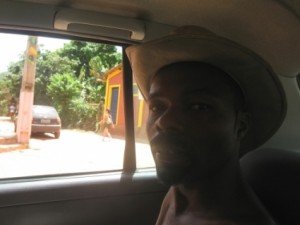
Photo © Michael Sommers.
Da Boca do Brasileiro means “Out of the Mouth of a Brazilian” and is the title I’ve chosen for a regular (if intermittent) feature of this blog. The idea is to let Brazilians do the talking by recommending their favorite things to see, eat, and do while also providing some insider dicas (tips) they think might be useful for visitors.
Thirteen years ago, Antônio “Barbosa” Sousa Santos moved to Diamantina, a colonial diamond mining town in Minas Gerais, where he founded the pharmacy department of the newly created branch of the Federal University of Minas Gerais. Once the largest producer of diamonds in the world, Diamantina is one of Minas’ most charming and unpretentious cidades hístoricas, a beguiling patchwork of whitewashed houses, baroque churches, and cobblestoned squares, plunged into the midst of the rugged Serra de Espinhaço mountain range. In fact, Barbosa’s arrival coincided with the town being declared a UNESCO World Heritage Site. Below, he shares some of the things that have played a part in his transformation into a man many of his friends refer to as the most Mineiro of Bahians.
Name: Antônio “Barbosa” Sousa Santos
Birth Place: Salvador, Bahia
Current Address: Diamantina, Minas Gerais
Profession: Professor of Pharmacy at the Federal University of Minas Gerais, Diamantina.
What to Do: Visit a waterfall, for sure, such as Biribiri (an abandoned 19th-century village surrounded by waterfalls such as Cachoeira da Sentinela and Cachoeira dos Cristais). The region around Diamantina has terrific waterfalls and visiting them is part of the local culture. They are a reference for Diamantinenses when it comes to leisure, but of course they’re also linked to the area’s diamond mining past as well since many deposits were found in riverbeds.
What to Eat: Typical Mineiro dishes such as frango ao molho pardo (chicken cooked in its own blood), frango com quiabo (chicken with okra), frango com ora-pro-nobis (chicken with leaf cactus). The best place to eat these and other specialties is indisputably the Pousada do Garimpo. But you can also get great home-cooked tira gostos (bar appetizers) at local bars such as Bar Zé and Bar do Branco.
Place You Can’t Miss: The Parque Estadual do Rio Preto is really worthwhile. It’s a beautiful place with many waterfalls and terrific accommodations – both in terms of pousadas and camping. It’s a publically administered place in Brazil that actually functions extremely well!
Insider Hint: Depending on the time you visit, Diamantina can be a completely different city. There are moments, such as Sundays, when it’s completely deserted. Other times, particularly during the popular festas such as Semana Santa, Corpus Cristi and the Festival de Inverno, it’s really vibrant. During these times, it’s swamped by tourists and Diamantinenses who congregate from other parts of the state. During the school year, much of the liveliness is a result of the fact this is a university town.
Insider Warning: Be careful if you’re coming during Carnaval or the Vesperatas (performances in which traditionally clad musicians and singers perform from the windows of colonial mansions, these are held two Saturdays a month between May and October) because pousadas sell packages in advance, making it very hard to get accommodations.
Recommended Sound Track: Years ago, Milton Nascimento came to Diamantina and went to swim in the nearby Cachoeira da Sentinela. As the sun was setting he took out his guitar and began playing a new composition to the accompaniment of local frogs croaking. He was so struck by the results that when he went to record the song entitled Sentinela (on the 1980 album Sentinela), he wanted to bring some frogs into the studio. Although the engineers usually gave Milton carte blanche to do what he wanted, this time they put their foot down.